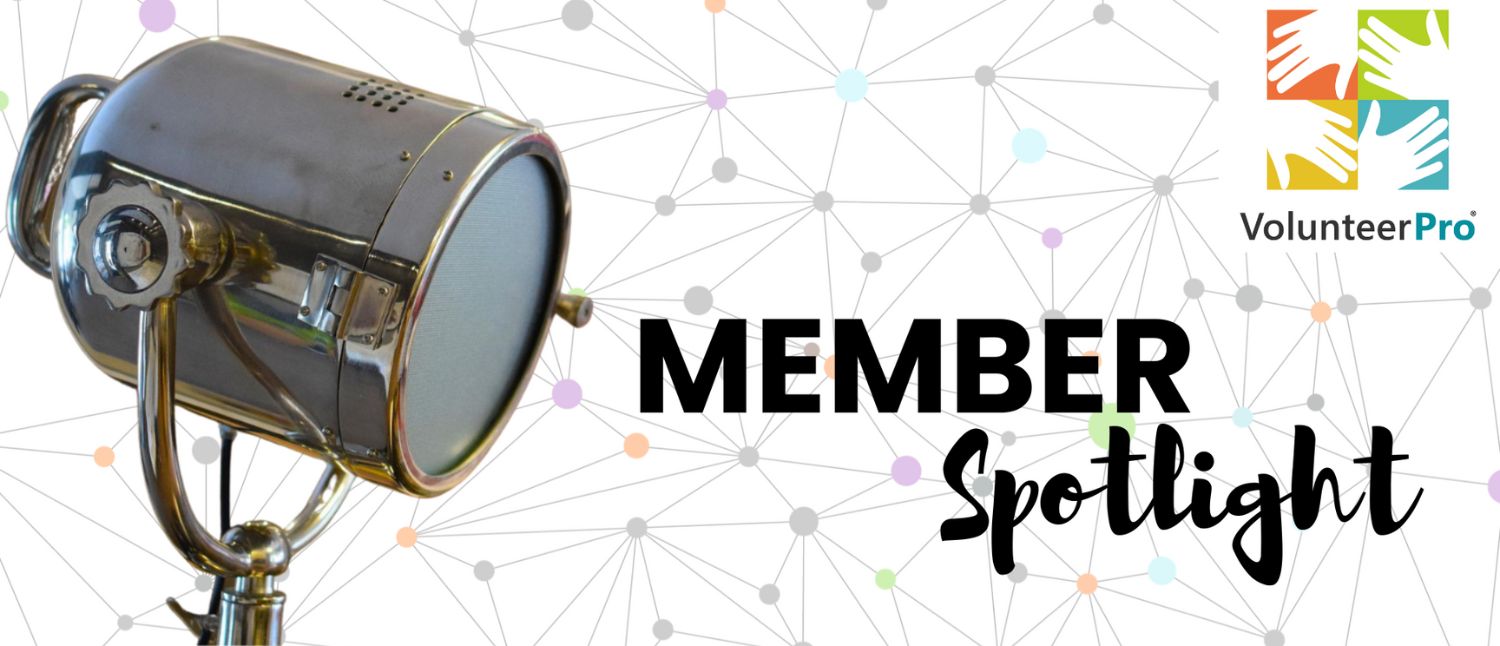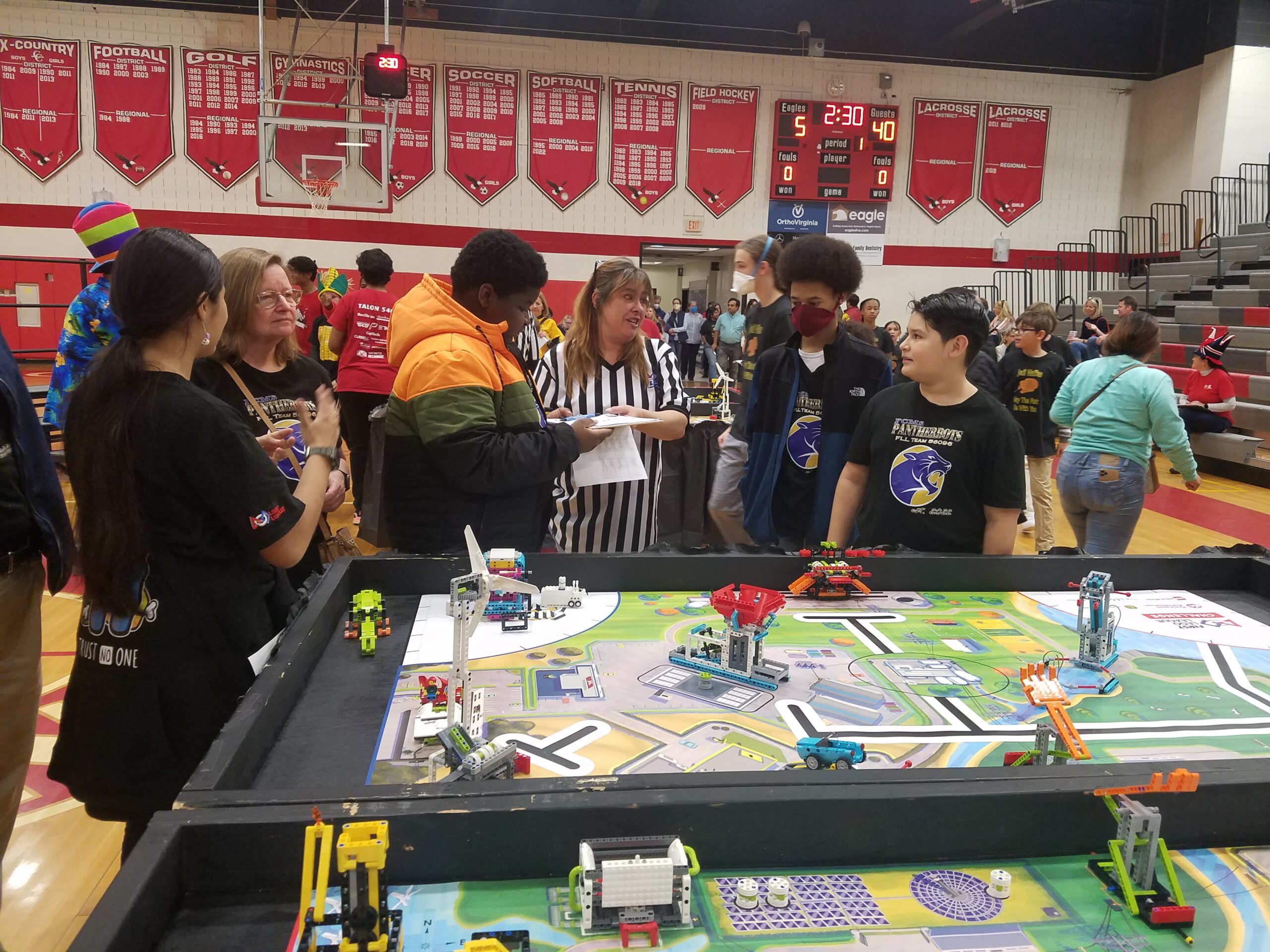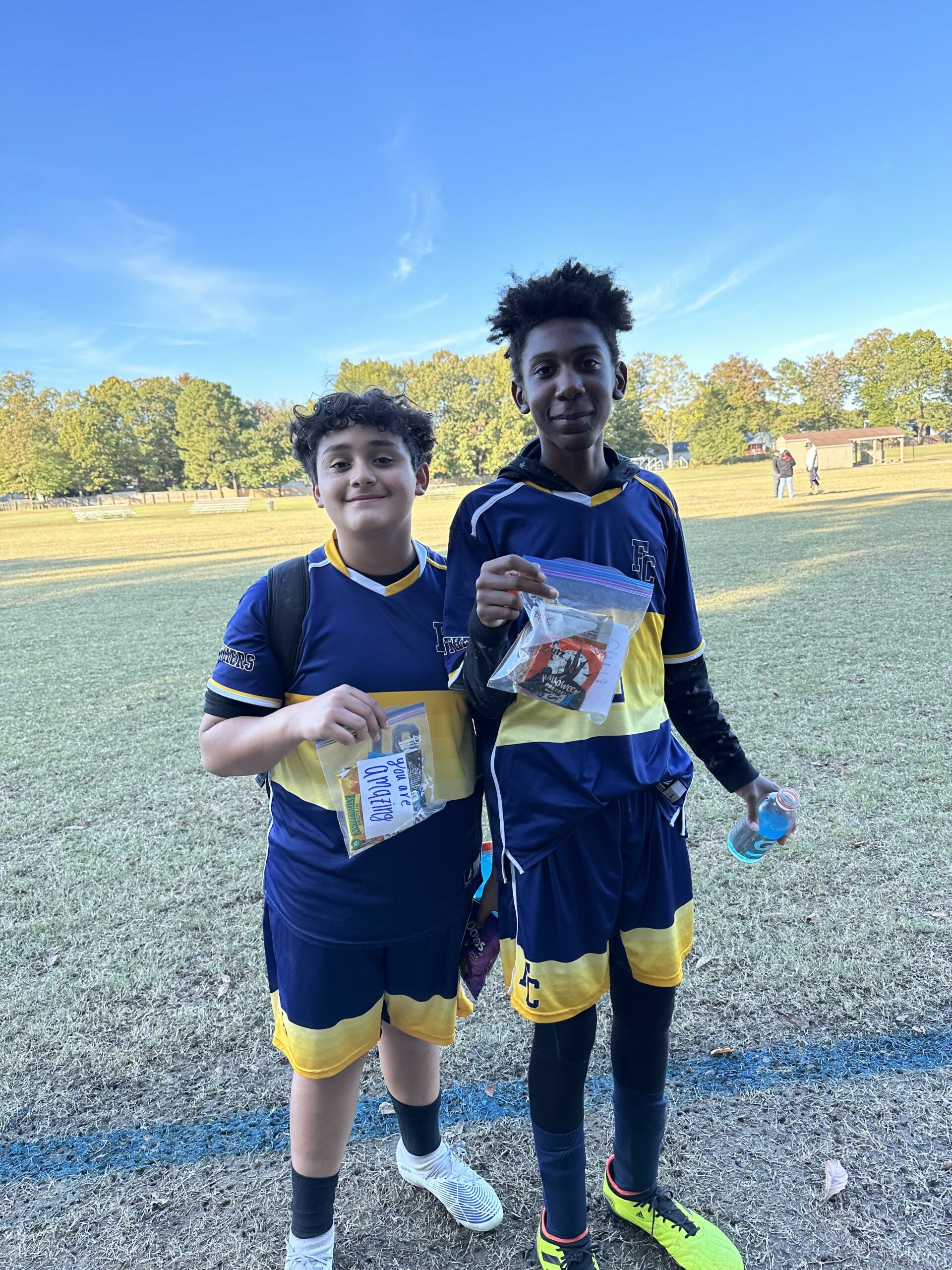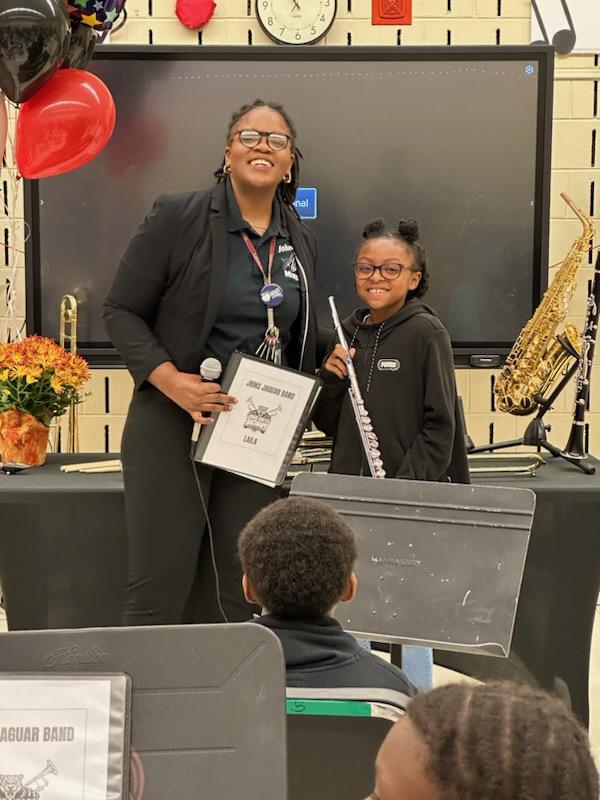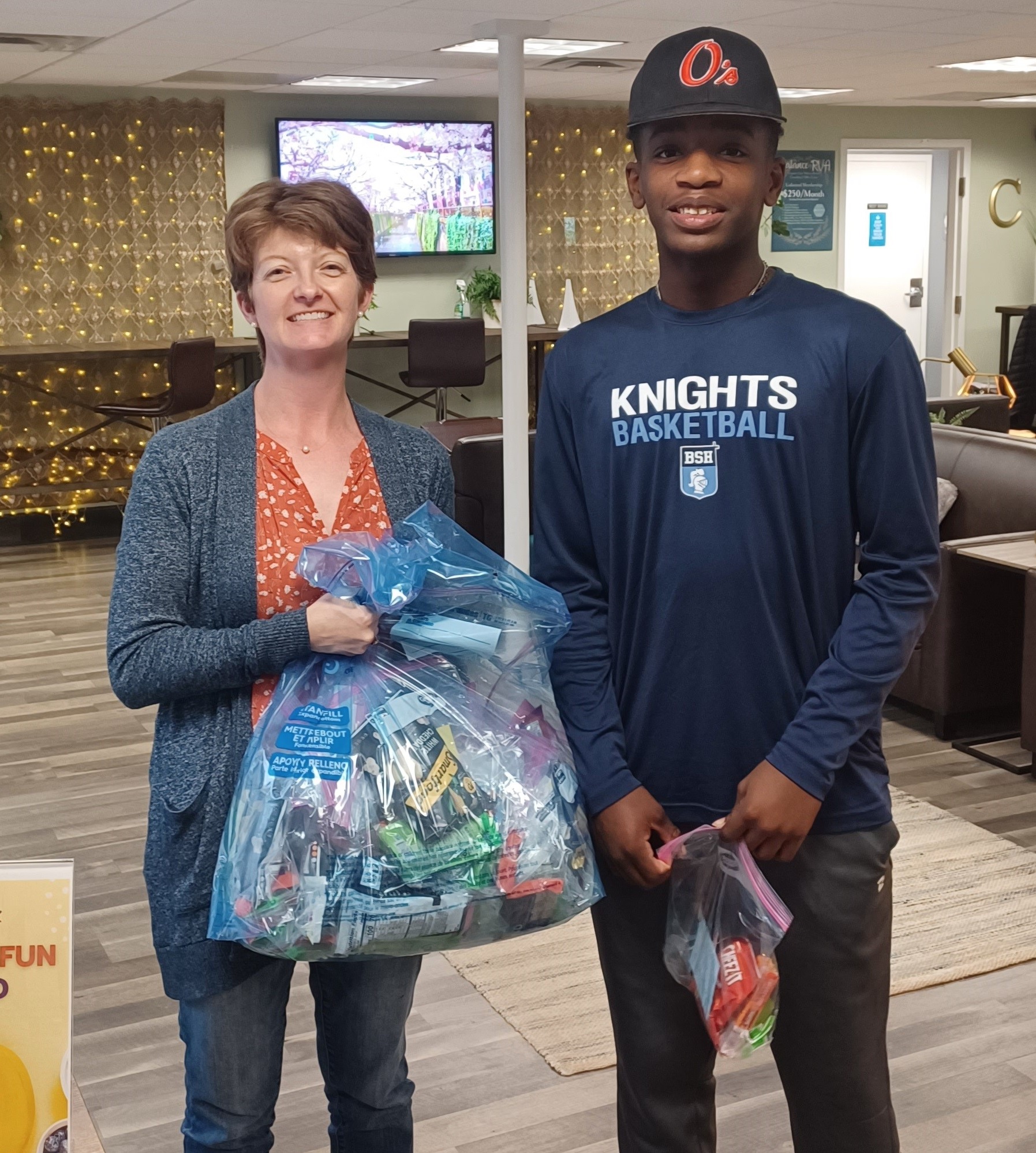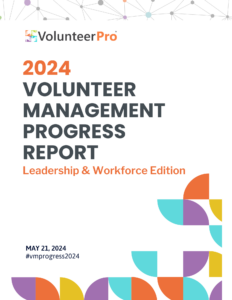Member Spotlight: Starting a Nonprofit to Support Middle School Extracurriculars
In this month’s Member Spotlight, we sit down with VolunteerPro Member Amber Lancaster, founder of Start1Spark, who shares about her experience starting a new nonprofit in the middle of a global pandemic and what inspired her to take the leap.
How Pandemic Shutdowns Highlighted Economic Disparities (And led to Starting a Nonprofit in Richmond, VA)
Jamie: Thank you so much for joining me today! Tell me a little more about your organization, and how all this came about.
Amber: I guess you could say Start1Spark was my “covid baby.” It came about in December of 2020 when here in the Richmond region, the schools were all in virtual learning. And then the decision was made to cancel all of the winter sports.
I was standing in my kitchen listening to the news, and it was really devastating to hear that. Although my kids are still elementary school age and weren’t directly part of those cancellations, I know how important sports and being with your friends are.
In that virtual world, we were all struggling with trying to figure out how to maintain friendships and build friendships and things like that. And in thinking about how tough it was mentally for the kids, and what dreams and hopes and aspirations they were missing out on, it also prompted the thought that “Oh, this is the way it is all the time for low-income families.”
I started thinking about those families that just aren’t able to provide the $20 shin guards, or the club fee, or whatever relatively small amount needed to be a part of a school activity. It’s too much of a burden for many of our families, and I thought, “That can’t be right! For as wealthy a region as greater Richmond is, somebody’s gotta be working on this.”
I had lost my job in October, so I was also in a “what am I gonna do next” kind of phase. So I started looking to see if anybody else was doing something about this need, and I never really found anything.
So I started doing a little bit of research, got some information, reached out to an acquaintance whose husband was a lawyer. And I was like, “Hey, I just have a couple of questions.”
In my head, I had not made the decision that this was what I was going to do next. I was like, “I’m just curious, I’m interested.” And so I shared the idea, and the lawyer said, “I love this! We’re gonna help you out. We’re gonna do this pro bono, this is perfect.”
It was one of those moments where things suddenly get real. I guess I AM doing this. And then a marketing team came on board to help me out. They said, “We love this mission. We’re gonna help you. We’re gonna help figure out your brand and your colors, and get you all set up.”
Now, here we are almost two years later. Our two-year anniversary is in May, where we officially got our Virginia 501 status. And that’s how Start1Spark started.
Dream Team Assemble! Who You Want on Your Side When Starting a Nonprofit
Jamie: Congratulations! Getting that tax status is a big deal!
Looking back now, what would you advise someone planning to start a nonprofit? What steps, and what team members, would you start with?
Amber: You definitely need a legal team and some marketing help, because people want to make sure you’re legitimate and “official.” And even if you’re not official yet, you need to present yourself as if you are in order for the community to buy into your mission.
People may be very passionate about the mission, but they want to make sure that, whether they’re donating their time or money, that it’s going to something that is going to fulfill the mission.
And I just want to make sure that we’re doing this properly because I want this to outlast me, and I want to set it up in a way that it will grow.
Right now we’re only working with two schools in our region, but I just had somebody in Massachusetts reach out to me and ask, “Would you be interested in a partnership?” I said, “Let me figure out things first here!” But we set ourselves up purposefully to be able to grow beyond our small region, if that’s where it goes.
It doesn’t have to. If we only support the Richmond region, that would be fulfilling enough for me. But if the next generation, the next leadership wants to go into North Carolina or Washington State, I didn’t want to have anything that we set up prevent it from doing that.
It’s challenging in that you have to think big picture, but also right now. This is where I am. A lot of it is just staying open-minded to where it could go, but also recognize that you may never see it go that way.
Jamie: Building scalable systems is key!
So, tell me a little bit about the specific services that your organization provides.
Amber: We do not create or provide any outside afterschool activities; we support what the school already has. So it could be a music program where we rent music instruments for the school year, like we do for one of our schools. It can be sports equipment.
Another one of our schools has a Lego club. It was the first year that they were able to compete, and we helped that club with team shirts so when they went to competition, they all got to look the same just like every other team out there. And we provided lunch.
It’s so important. You don’t want to feel less than, and that’s part of the reason why we targeted middle school. You come out of elementary school so naïve…everybody was equal, everybody’s the same, you didn’t recognize any differences.
And then you get into middle school and you finally have opportunities to pick some classes, you get to pick a sport. The choice is yours, and you get to decide on something. But then you get turned down because mom and dad or grandma says, “Well if we do that, I can’t put food on the table.”
And then you begin to internalize yourself as being less than, and you see your peers and your friends doing that activity that you wanted to be a part of, and you don’t get to be a part of it.
And you don’t get to feel like a part of your school either, right? There’s no “Cool, I’m a Panther!” Instead it’s, “Whatever. I’m just showing up.”
Jamie: Middle school is hard! I was in band in middle school and high school, and it gave me a peer group, and people to sit with at lunch, and a group shirt to wear.
Amber: it’s like I tell a lot of people: you don’t remember who you sat next to in science class or math class, but you remember who played the flute two rows down, right? You remember those people, and some of them you may still keep in contact with.
Or you know, if you’re going to a high school reunion, you’re like, “Oh, so-and-so’s gonna show up. I haven’t seen him for in forever, but we used to play band together.” Those are the memories that you keep from school.
Providing Services to Break Cycles of Poverty and Open Doors of Opportunity
Jamie: I was looking on your website to see what other services you provide. Snacks, equipment for sports and music…what else that I missed?
Amber: Club fees for anything like STEM, or just anything that has a club fee to be a part of. For the arts, last year one school had a play, “Moana Junior,” and all of the kids were able to come up with their costume pieces, but they asked if we could do the pre-show dinner.
So we did the pre-show dinner, but we would help with costume pieces because again, buying an extra t-shirt that can be tie-dyed or cut up may not be in the budget for some families, but it’s also a big part of being on stage and being in the role.
Jamie: How do you connect with beneficiaries? Do you reach out to the schools, or do they reach out to you?
Amber: We did a pilot program in our county public schools last year. They were the ones I was most familiar with, so we reached out to them and said, “This is what we’re trying to do. Can we try something together?”
We had some contacts at the central office level, so they chose the school. Our requirement was that it would be a middle school and that it would be like 60 to 70% economically disadvantaged. That way there was an actual need.
There wasn’t a lot we could do at the beginning of the school year, except with the music teacher who I will be forever grateful to. It was one of those instances where it’s like, “I’m gonna take a chance on you, you’re gonna take a chance on me” kind of thing.
She asked if we could rent 10 instruments for her class, and we were able to figure it out and actually provide 14 instruments for the school year. And we helped with the programs for the music concerts and things like that.
Over the summer she shared with me that she really wanted to build her music program. She was like, “Our music program used to be used to be really important, really good. You’ve seen all the plaques that we had from the eighties and nineties when we were winning competitions. It’s died a bit, but I’m gonna build it back up.”
But she also explained it’s a bit of a chicken and an egg. Lots of school systems cut a lot of their music and arts funding in the great recession, and that funding has never come back. So in order for this music teacher to get more money for her program, she has to have students enrolled in music.
But she can’t get students enrolled in music because they can’t afford to rent an instrument, and she doesn’t have extra instruments. So she’s like, “I’m kind of stuck unless I have someone like you to be able to provide the instruments and help me build the program, because then I can say I’ve got x number of students, I’ve met the criteria to be eligible for money.”
She has a big vision, and that’s what we’re here for. This is what we’re doing.
Jamie: I saw one of those band members featured in your newsletter. Very cool!
Amber: That school in particular, their students are eligible for scholarships to Virginia Union University. But one of the criteria is having extracurriculars. And of course it’s great they’re offering scholarships, but these kids, some of them can’t be in extracurriculars without the community behind it.
And that’s what it’s all about. We’re helping the students, and we’re helping the teachers, and we’re helping the community itself. Giving them back some pride and something to look forward to.
Jamie: And breaking cycles of poverty and lack of opportunity and all those things that keep people from really thriving. Shin guards can change lives!
How VolunteerPro Resources Helped Build a Strong Foundation
Jamie: I’m curious…you’re a VolunteerPro member. How do VolunteerPro resources fit into your overall strategy? What have you found to be most useful?
Amber: A lot of stuff I’ve put to use. I think getting started, being able to see the recruitment process and be like, “Okay, these are the things that I need to list out for, like, the copywriter. What do I really want the copywriter to do, and how can I make sure that the copywriter understands when I’m asking them to do it?” That kind of thing.
A lot of the practical steps, VolunteerPro walks you through bit by bit. Like, this is how you think big picture and then keep going down until you get to the roles and responsibilities. How much time do you want this person to spend? Is it in person, or is it virtual?
Really think about the position and what you want them to accomplish, and make sure that you’re being transparent in that job description. And then during the interview process, having a conversation with them and finding out, where else do you volunteer? What else are you interested in?
Is there something that you want to get out of this volunteer experience? I understand you’re helping me, but what else do you want to get out of it while you’re spending your time with us? Let’s make it really meaningful and worthwhile.
Recently with the one volunteer, I was like, “Oh gosh, I need to come up with a scope of work to be able to explain the position.” Now that he’s on board and has the right qualifications and desire to do it, now I need to get into the nitty-gritty. “Here is all of the stuff that I think you need to get the job done. If there’s something I left out, have a question come back to me. But this should be able to get you started at least.” And then continue that conversation.
Tobi’s very motivational. It’s lonely as the chief everything officer, and it’s nice to have a cheerleader behind you when you feel like things aren’t working. When you’re just throwing wet noodles on a wall and it isn’t working, it’s fantastic having somebody back there like, “Hey, we got this. We can do this. Let’s talk it through. Let’s figure it out. How do we keep moving forward?”
I think it’s very important to have somebody behind you, not just cheerleading but also keeping you accountable in the sense of like, “Hey you have the tools. I’m giving you the tools. They’re in the learning hub, they’re in the membership community. Let’s go find them, then let’s dig into them. Let’s do this. You can do this, and here’s how.” This is very, very, very helpful.
VolunteerPro has really been powerful in helping me get to where we are in just a few months. I mean, it’s been transformational what our volunteers have been able to do and that’s largely because of you guys showing me the path of, “This is how you can do it. These are the steps that you need to do to make it sustainable and make it work.”
Jamie: Yay! That’s always the goal. I’m glad to hear it.
Well, it was a pleasure talking with you today. Thank you for sharing your time and telling us a little more about Start1Spark. It’s an incredible organization!
To learn more about Start1Spark and the services they provide, check out their website HERE>>
Starting a New Nonprofit, or Building on A Mature Foundation?
You don’t have to figure it out alone! In membership, you’ll find all the tools, coaching, and resources you need to move your volunteer program forward faster, and with less stress and overwhelm.
Whether you’re starting from the very beginning, building on an established program framework, or somewhere in between, VolunteerPro Membership has exactly what you need, right where you are, to help build, grow, and scale a sustainable volunteer team of enthusiastic, committed talent.
Monthly and annual subscriptions are available. Learn more today!

